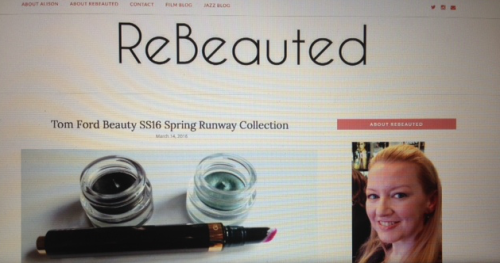
Karolyn Grimes was a six-year-old movie veteran when she was hand-picked by director Frank Capra for the part of Zuzu Bailey in It’s a Wonderful Life. Of all four of the Bailey children, Zuzu was the most significant: it is the discovery in his pocket of Zuzu’s petals (from a dying flower she had beside her bed) that makes George Bailey realise that he is back in the real world, to his ecstatic relief. And it is Zuzu who utters the immortal, penultimate line: “Every time a bell rings, an angel gets his wings.”
Grimes, now 81 has vivid memories of making the film. “I had a blast, ” she says. “There were other kids on the set – which made it fun, and the snow had a big impact on me too: I was born and raised in Hollywood so I had never seen snow and although this wasn’t real snow, it was close enough.”
During her short career, Grimes played alongside various leading men – John Wayne in Rio Grande, Cary Grant in The Bishop’s Wife (another Christmas classic), Bing Crosby in Blue Skies – but she had a particular affinity with James Stewart.
“He had a lot of patience with me,” she says, “and always helped me if I messed up a line.” Frank Capra also had a way with children. “He didn’t yell at us. Some directors were very fierce, but he’d get down on his knees and talk to us at eye level. He let us be natural. You didn’t have to stick to the script word for word and that gave us kids a feeling of relaxation. He and Jimmy Stewart had a special rapport and played a lot of practical jokes – there was a real family atmosphere on that set.”
Unfortunately, the rest of Grimes’s childhood was anything but wonderful. Her movie career ended abruptly in her teens when her parents died: her mother died of early-onset Alzheimer’s and her father was killed in a road accident just a year later.
“The court in Hollywood shipped me to a little town in the midwest to live with my uncle,” she explains. She trained as a medical technician and was raising her children when, one day, somebody knocked at her door and asked if she was Zuzu.
“It was a writer from a local newspaper, and they published an article about me. Then another one published something and pretty soon it was picked up by the wires. Then it was official – they had ‘found’ Zuzu.” This was the early 1980s, and It’s a Wonderful Life was about to undergo another boost – through its video release.
“I was aware of its increasing popularity, but I didn’t think much about it until I got my first fan mail. Then I got more and more – I was shocked. I had all the movie memorabilia in the basement and every time someone came to interview me, I’d drag it all up the stairs. Finally I thought, well it looks like this thing is here to stay. so I made a room and put the stuff on the walls, and in cabinets, and I now have a little museum!”
The other Bailey kids were duly tracked down too, and they were all reunited with one another by phone. Then, in 1993, they were brought together for a country-wide tour of personal appearances – 750,000 fans turned out to greet them on Sunset Boulevard.
These days, Grimes spends most of her time in the run-up to Christmas on such tours – her grandchildren call her Grandma Zuzu. “I’ve been on the road with It’s a Wonderful Life ever since. It’s really a second career.”
So why does she think it’s so well-loved? “Because there’s a message in it for everyone. We’ve all gone through adversity. I didn’t really watch it until 1990 when I lost my son. I was kinda compelled to watch it when I went to It’s a Wonderful Life parties, and that’s when I found the magic. Now I see it maybe 20 times a year. I enjoy watching it with people, and seeing their reactions, and I hear amazing stories about how this movie has affected their lives in such positive ways. I think that men especially love this film because they can identify with George in so many ways.
“For a lot of men, their dreams never come true. And I also think that one of the great fears that men havers that they won’t be able to support their families. They live with that almost continually, so they all identify with George.”
Perhaps the biggest thrill to come out of all of this for Grimes was the chance to be reunited with her screen father late in his life. “When people started looking for Zuzu, they would write to Jimmy Stewart and he would send them in my direction. We had a reunion in 1990, in New York. He and I spent the whole day together. There was a woman who had been his fan for 50-something years, and he had made it possible for her to come to New York. She met us at his hotel and she brought this huge scrapbook that she’d kept over the years of everything he’d ever sent her. We sat down and went thought he scrapbook and relived his life, page by page. It was really quite a wonderful experience. It’s a lovely memory to have of him.”
- This interview was conducted in 2006



 Robert Townson, the film music producer who brought Hollywood legends to Glasgow in the 1990s and worked with the Royal Scottish National Orchestra on a series of recordings now regarded as mythic, is returning to Scotland next week. In two special concerts, the RSNO and Townson are reuniting to celebrate the 40thanniversary of Varese Sarabande, the record label which showcased their unique relationship; a relationship which produced an astounding 40 soundtrack albums over seven years.
Robert Townson, the film music producer who brought Hollywood legends to Glasgow in the 1990s and worked with the Royal Scottish National Orchestra on a series of recordings now regarded as mythic, is returning to Scotland next week. In two special concerts, the RSNO and Townson are reuniting to celebrate the 40thanniversary of Varese Sarabande, the record label which showcased their unique relationship; a relationship which produced an astounding 40 soundtrack albums over seven years.
























